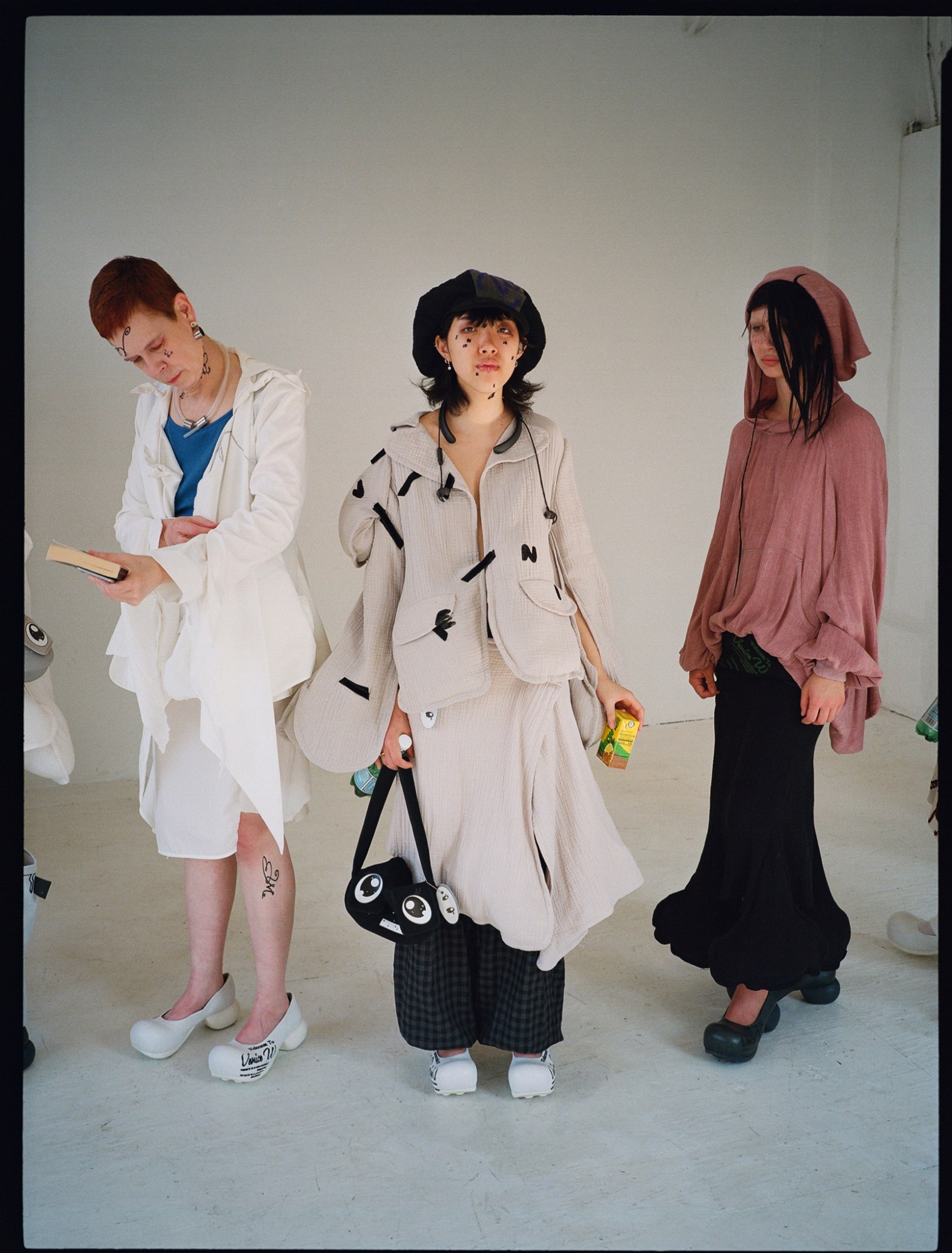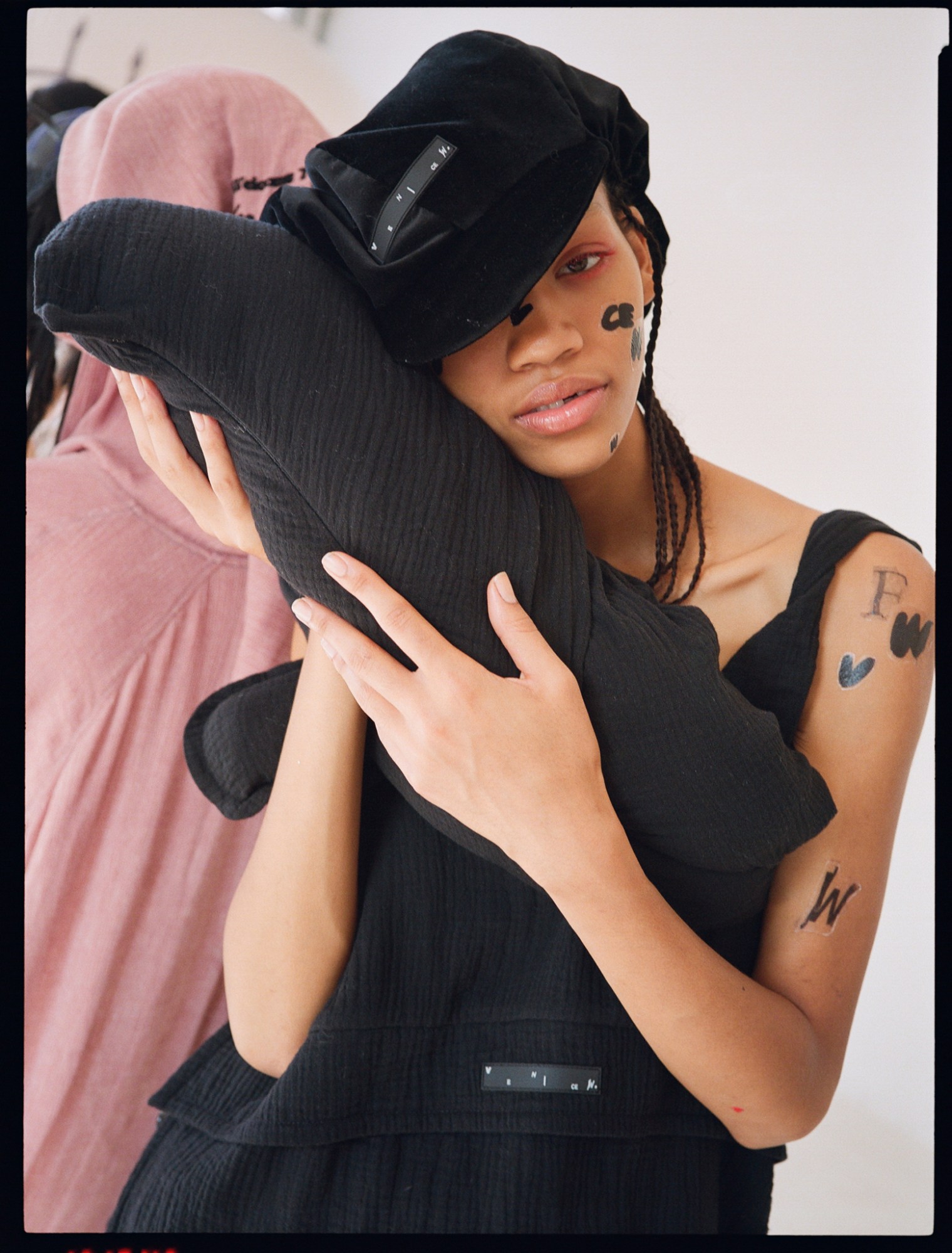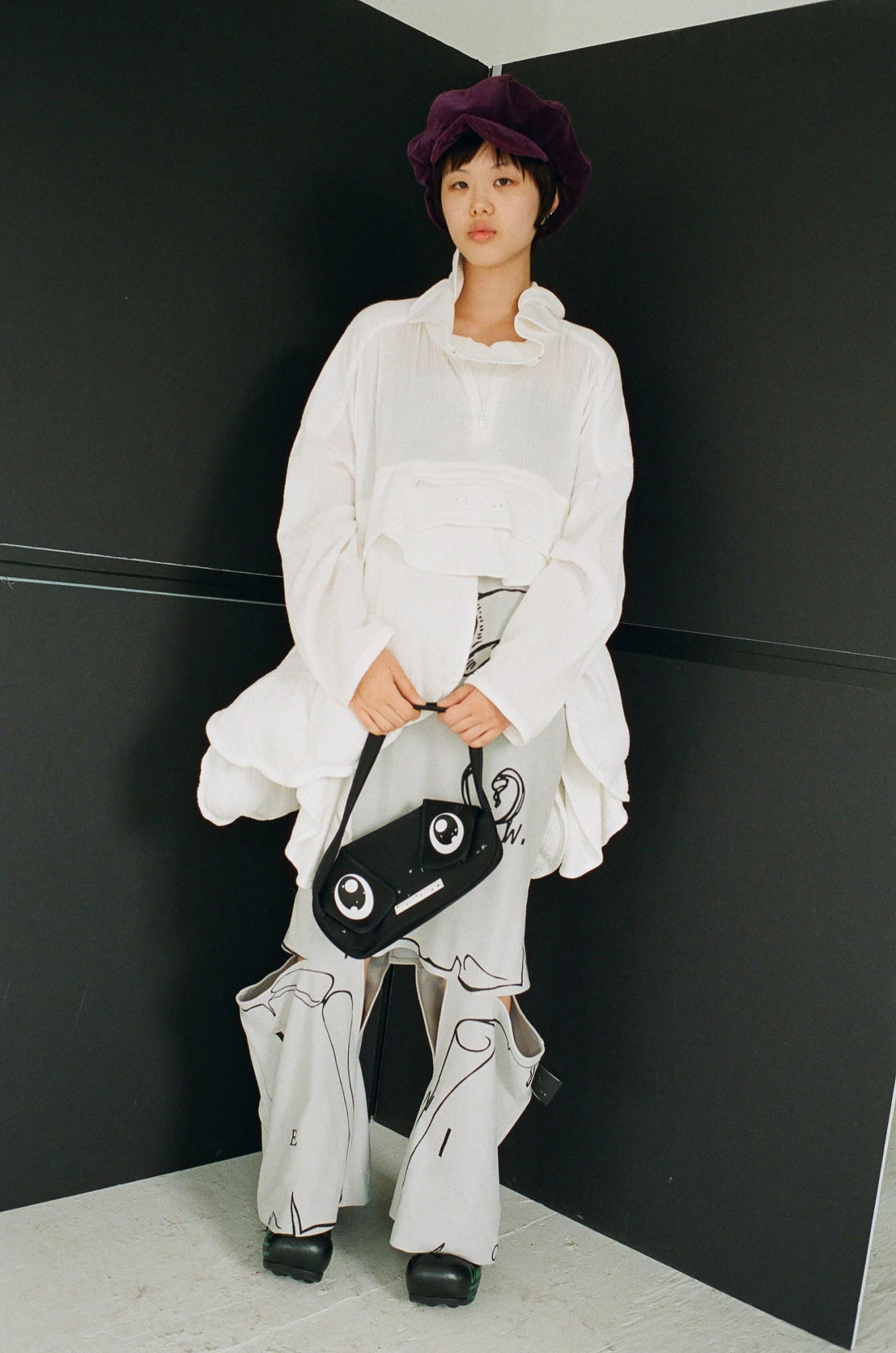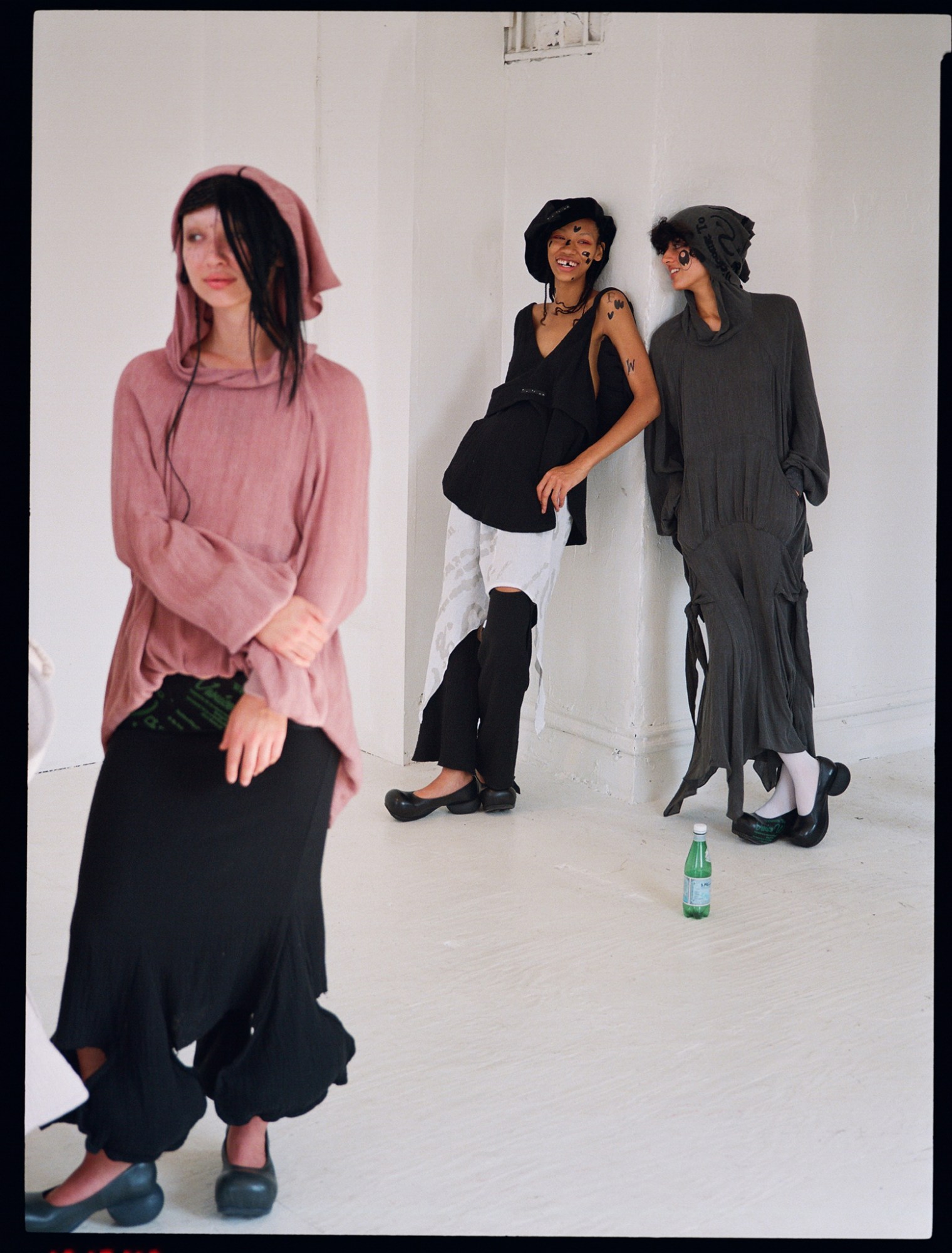At the height of a heatwave last September, around ten girls queued patiently in a loft in Manhattan’s Chinatown. Some chatted quietly among themselves, others, presumably fatigued, leant against walls, squatted or sat. In their airy cotton garments, they were dressed as appropriately for the weather as they could be. What exactly they were waiting for remained a mystery throughout…

“The initial idea I had was that they were meant to be queueing to use the loo,” explains Venice Wanakornkul, the Parsons graduate designer who debuted her label, VeniceW, off-schedule for SS20. She insists however that there was more than one way to take in the spectacle. “It was anything the viewer wanted it to be, really. Whether it was people waiting at the gates of heaven, in line at the home office, or even for a rave.” The potential readings she offers may seem oddly disparate, or even wilfully esoteric, but they find common ground in one of the designer’s most avid interests: the humble act of waiting. “I find the experience of waiting really interesting. People do all sorts of stuff to fill those moments where not much else is happening,” she says, implying a similar fascination with life at its most mundane to designers like Telfar, Section 8 and Eckhaus Latta, all of whom she’s worked with. “Waiting for a flight at the airport is a great example,” she continues. “Often, there’s nothing to do other than find ways to waste time. It can also be a really emotional — before the plane takes off, you might text the people you love most which you might not do in other situations.”
It was such an occasion that sparked the development of her latest work, and a particularly poignant one at that. Venice had received a call from Bangkok, her hometown, notifying her of her grandmother’s passing: “The next day, I found myself in the JFK departure lounge, waiting. Usually, I’d kill time by playing on my phone, or doing some shopping, but I was in such a strange mood this time around. So I just sat in a restaurant, drinking a Bloody Mary and made mini-outfits with tissues on the table,” some of which translated to the angular drapes of streetwear-inspired jackets and hooded dresses. “It’s a method of working I try to maintain — whenever I’m waiting for something, like for a food delivery at home, I’ll start playing with a tissue — there’s always one nearby.”

If you’ve seen Venice’s Parsons graduate collection, you’ll know that tissues aren’t a new fixation. Then, we saw them emerging from slits in padded linen gilets, skirts and trousers as if they were walking dispensers. They were a homage to her mother’s constant requests for something to sort out her eye makeup, prone to running in the muggy Thai heat. Tissues, naturally, were also a central feature of her grandmother’s funeral procession: “We were all very sad, of course, and everyone was crying a lot. But because of that, there were tissues everywhere — I noticed them wherever I turned,” Venice says. “I’m haunted by them, I swear!”
Tissues also leave their mark on the subtly crinkled cotton gauze that makes up the collection’s bulk. Its muted, predominantly monochrome tones served as a paper-y canvas for lo-fi graphics and branded graffiti prints in black, ink blue and burgundy — the latter of which refers to a clumsy moment we can all identify with. “I was on a flight wearing a white skirt and drinking a glass of red wine,” Venice says. The resulting accident sparked a lightbulb, and birthed the pinot noir print.

While the textures of Venice’s collection might call paper hankies to mind, the pillowy contours of jackets, shirts and skirts drew upon another product you’ll no doubt find lying about your bathroom: cotton pads. “I always like for things to be balanced, so if there are angular elements, there needs to be a certain roundness too,” the designer explains. “I thought that cotton pads would complement the tissues nicely — you often find them next to each other anyway, so it was a natural fit.”
The designer’s decision to introduce the puffy pads also came down to a particular quirk of her brand. “I think of it as a city,” she says, for reasons you’ll probably have clocked on first reading her name. “The way I want to interact with my audience is through the ‘VeniceW Tourism Board’, encouraging people to see more of the city by wearing the clothes.”

Until this season, VeniceW’s principal inhabitants were — no prizes here — the ‘Tissue People’, their typical garb exemplified by the crumpled, angular garments on show. For SS20, however, the designer introduced the ‘Cotton Pad People’, altering traditional patterns for jackets, parkas, shirts and skirts, and rounding out their corners by hand to achieve what reads like a bubble-written take on tailoring. There are animals in the form of accessories, too. The neoprene baguette bags, named the ‘Crow’ and the ‘Pigeon’ — as if lifted from St Mark’s Square itself — have already proven an underground hit among New Yorkers in the know, and this season’s bulbous printed shoes, a heartfelt ode to the designer’s Bobtail cats, will likely prove just as popular.
Beyond the fascinatingly mundane fiction that her work illustrates, it also demonstrates practical ingenuity when worn here in the real world. The pillowy poise of the cotton-pad pieces, for example, is accentuated by removable padding, included as much for comfort and warmth as for adhering to the theme. “When you sit in them, they’re so comfy. I immediately thought they’d be great to wear for a long-haul flight,” she says. “It’s almost like you’re sitting in an armchair at the airport.”



Credits
Photography Christian DeFonte
Styling Carl Gustaf von Platen
Makeup John Yuyi
Wigs Tomihiro Kono

